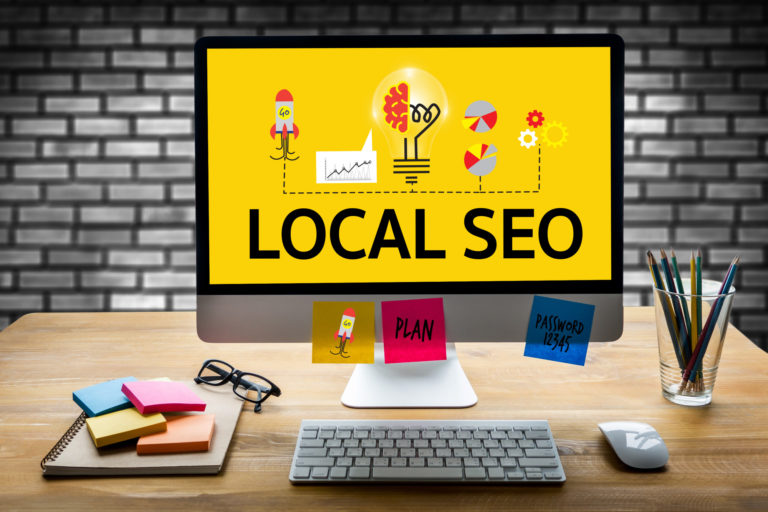If you were to guess how many follow-up connections it takes with a potential customer before a sale occurs, what would be your answer? Two times? Three times?
No, even after the fourth time, 80% of potential customers still say they’re not interested. By this fourth follow-up, 92% of salespeople have given up on the sale. This is a shame because that group of potential customers that denied the sale four times actually end up making the sale after the fifth time!
Don’t be a part of the majority that loses 80% of sales because you give up too soon. Read on to learn how automated follow-up software can help you take advantage of this insider information. Then, you can streamline your efforts in improving conversions.
Why Don’t Customers Buy?
It’s nothing personal. There are a lot of reasons why customers don’t purchase at the moment. It isn’t always because they aren’t interested in the product or because you’re bad at selling.
Want to better understand your potential customer and improve your marketing and sales tactics? You must first assess why they are unmotivated.
For example, many people are very busy and lack the time to think things over. They might have too many other things on their mind, or want to relax instead of mull over products. It’s possible that they’re also not feeling motivated enough to go through with the sale.
When it comes to money, they might worry about price or their financial situation. They could have budget constraints and they aren’t convinced they should buy.
These are factors that, as a salesperson, you can’t change. You can’t help your customers with money problems or busy schedules. You can improve your strategies so that the act of purchasing makes sense.
How? You need to build a relationship of trust and loyalty that sticks around for when that customer decides to buy.
Building Trust Through Follow-Ups
It’s in human nature to give up after a few rejections. The last thing most people want to do is keep asking the same question just to get the same answer. It can feel hopeless, and even sometimes too persistent, and you don’t want to cause that person to have negative feelings towards you.
A salesperson’s responsibility is to turn this negative into a positive. Never take “no” for an answer, but also be charming enough that your methods aren’t perceived as annoying.
In other words, be creative in finding different ways to keep connecting with that prospect. Don’t give up until you’ve been rejected at least five times, if not more.
Each time you ask, your connection should be more than a sales pitch. Remember that people are much more likely to buy when they feel they have a connection with the brand. Take advantage of each attempt by turning it into a positive interaction.
How Can Automated Follow-Up Software Help?
Now that you’ve committed to improving your follow-up game, you’re probably realizing that your workflow will significantly slow down. Increasing the number of times you have to manually follow up with a customer can double or triple the amount of time you spend on leads. This is a huge slowdown for your businesses, even if it’s worth it to improve conversions.
Automated follow-ups are your solution. Here are 11 reasons why.
1. Save Time on Follow-Ups
Follow-up strategies can be greatly improved by using automated software because suddenly each connection won’t require manual action. Great marketing software for automated tasks will handle leads from the first connection all the way to the sale without the need for you to lift a finger.
You won’t have to set up each email from scratch or even manually input leads into your system. To set up the software, you only have to build the campaign once and then walk away. Once the software is given tasks, it will automatically carry out those tasks without any further prompting.
Not only will you not suffer from the extra time-consuming follow-ups, but you’ll also be saving even more time than you ever did before.
2. Full Integration
Great follow-up automation software can integrate into your customer relationship management systems (CRM). While your CRM is tracking and managing all your interactions and relationships with customers, your automation software can use that database as a source for leads with which to follow up automatically.
There are many complicated campaigns you can build with marketing automation software integration, but you can also keep it very simple while still getting staggering results. Full integration of your CRM and marketing automation software can help you build a powerful sales machine, starting with lead collection and nurturing those leads until they convert.
For example, you could center your lead generation around a campaign that starts with a lead magnet. You offer a digital product, for instance, in exchange for email addresses. Your CRM can log this interaction, and your automation software can use this information to start following up with the lead.
3. Expand Your Reach
While human workers are great, they have limits. They clock in and clock out with a restricted amount of hours and can get bogged down by heavy workloads. Using robotics in the marketing and sales industry lifts those limitations so that your business can have limitless potential.
With marketing automation software, you’ll see this potential best in your customer reach. You can support endless amounts of interactions and customer prospects without worrying about if you have enough people to handle it. Calls and emails, for instance, can become fully automated so that you’ll never be overwhelmed by the number of leads you get.
4. No Room For Human Error
With automated follow-up software, your ability to make mistakes begins and ends with setting up campaigns. Because automation follows tasks exactly as you set them, you’ll never have issues with missed connections or human error. This streamlined system allows you to remove mistakes from the equation.
In addition, setting up campaigns fully from the start allows you to evaluate your entire follow-up process as a whole. Any redundancies or issues in the system will be found by the full evaluation, and you’ll be able to perfect the process before you set it in motion. Once that process is in motion, it will be followed exactly as planned.
5. Lower Overhead Costs
As with all automation efforts, tiresome and redundant tasks are taken off the shoulders of your employees. Computers can take over time-consuming responsibilities so that human employees can spend more time on improving processes and running the human side of the business.
Automation software allows your business to exponentially grow without your costs rising. One salesperson equipped with automation software can compete with fifty salespeople working fully manually. Over time, you’ll be saving significant amounts of money on overhead and salaries.
6. Accountability Becomes Clear
Not all employees will want to hear this, but adding automation software to your marketing efforts will make the productivity and effectiveness of each employee very clear. As the software takes over campaigns and provides real-time reports and defined processes, you’ll be able to see your entire company’s system in one glance.
The software will offer several different options for reviewing progress and success, including general overviews and comprehensive analysis of specific aspects. A glance at an overview report can offer a red flag for a specific problem, which you can then investigate further.
For example, if your software is showing that your lead generation is fantastic but none of the leads are converting, you’ll be able to pinpoint that the marketing department isn’t doing a great job of nurturing interested prospects.
In addition, this software will allow everyone to continually check their progress and make immediate changes to fix problems. It will never be a surprise report at the end of the month, leading to lost time and sales. You won’t even have to have those tough conversations, because automated warnings will alert specific departments with impartial feedback.
7. Deal Size and Revenue Improve
With automated follow-up marketing software, you’ll also be able to automate cross-sells and up-sells that can improve the lifetime value of your customers. Instead of relying on salespeople to remember to up-sell or cross-sell, you can set up rules for your software that will automate them. For example, every time a customer checks out with a purchase for their car, you could have the software remind them to get new tires or windshield wipers.
In addition, improving your lead management can help improve the return on investment.
By managing your leads better, you’ll be able to especially prioritize those that will lead to bigger sales. You can nurture them more and continue to build a strong relationship past the first sale. As a result, your businesses will enjoy increased revenue with much less effort.
8. Allows For More Creativity
When you take away the time-consuming tasks of marketing and sales, your professionals can spend more time evaluating the big picture and being creative. Productivity will go up at the same time that marketing and sales professionals are coming up with new ideas, uninhibited by the thought of increasing workload or taking on more difficult tasks.
While your automation software takes care of follow-up campaigns, your teams can meet to discuss flaws in current campaigns, how to fix them, and how to create better campaigns in the future.
9. Targeting Made Easier
It’s basic marketing: the more targeted your campaign to a specific need and audience, the better the campaign. Ultra-targeting campaigns on a large scale, however, is very burdensome without the help of automation. With automated follow-up software, you can set different campaigns based on niches and interests.
Without the burden of doing carrying out all those different campaigns manually, you can create more target campaigns to reach more potential customers. In addition, you’ll be able to target campaigns using multiple channels of communication. You can set up your automation systems to send texts, postcards, emails, and more all according to which actions have been taken or which goals have been reached.
10. A/B Testing Becomes Automated
A/B testing can be tedious because it requires you to create different versions of the same campaign and test it before you release the full campaign. You won’t be able to get around creating different versions, but you will be able to fully automate this A/B testing. You can set up your automated follow-up software to deploy different versions of campaigns and track the results.
Doing A/B testing on a large scale will be much easier with automation, and you’ll never have to stop the testing either. Your automated follow-up software can continue A/B testing throughout the entire marketing process. As a result, you’ll get more results much faster and be able to improve your marketing activity dramatically.
11. Increase Lifespan of Content
Last but not least, the content your business creates can get a longer lifespan and be repurposed in limitless ways. For example, if your business puts out resources like blogs to draw in customers, it’s common to share them on social media and never look at them again. However, you can use these blogs in several ways beyond just social media posts.
For example, automated follow-up software can be tasked to contact leads when they’ve viewed certain blog posts. You can set up a message that specifically thanks a visitor for reading that blog post and talking about how it can help them. Finally, you can include a call to action to directs them to revisit the website or check out a related product.
This type of follow-up is highly personalized and targeted, making it much more likely for potential customers to trust you and follow through on purchases.
Improve Sales With Automated Follow-Ups
There are so many ways that automated follow-up software can improve your sales and marketing performance that we couldn’t fit them all in this article. By now, however, you should be convinced that automating your sales tasks is the best move for your business.
If you’d like to get started with automation, Fishhook Marketing can set up your website with a lead magnet, drip campaign, and further automation. To find out exactly how automation can help your business, contact us today!








